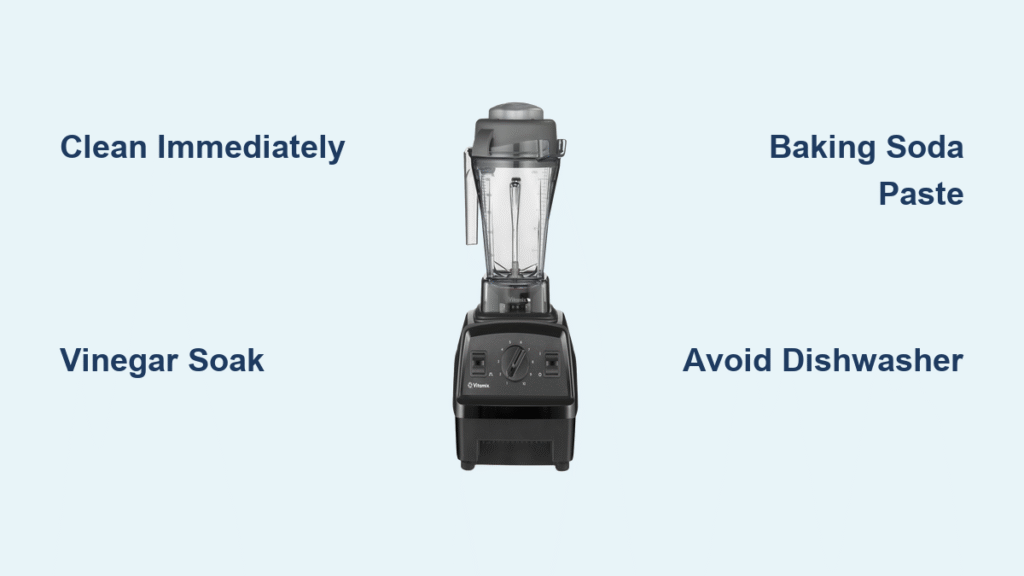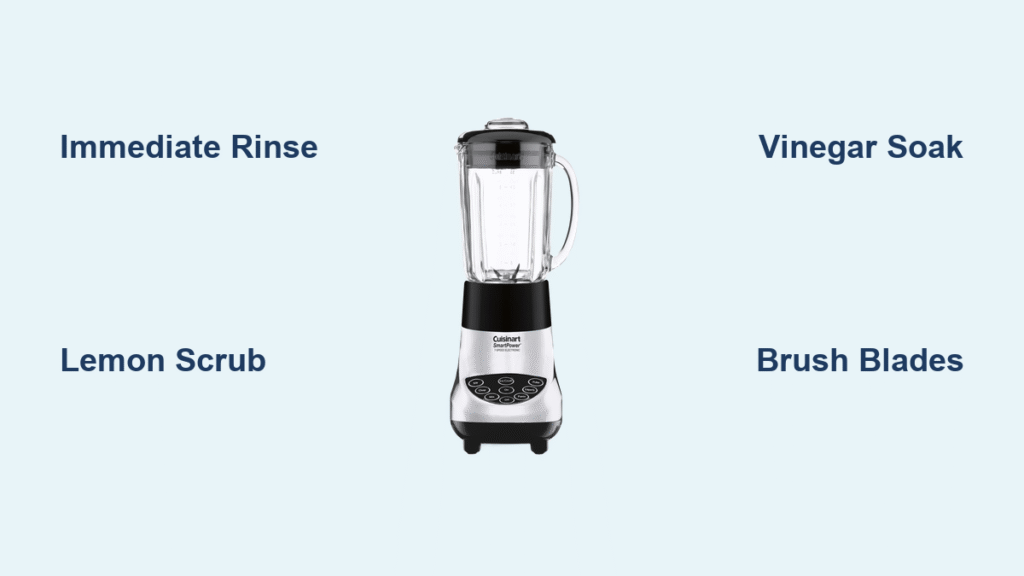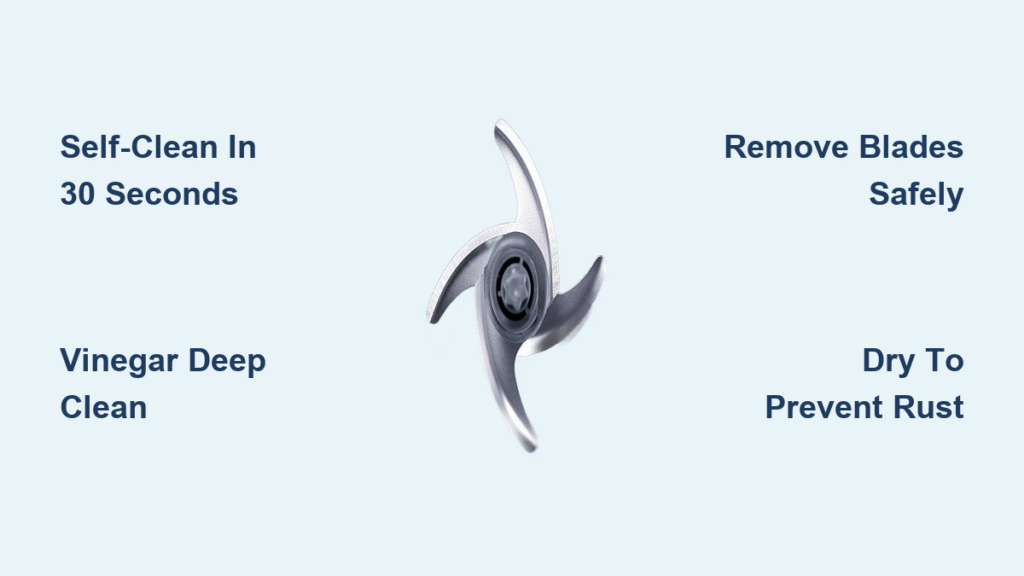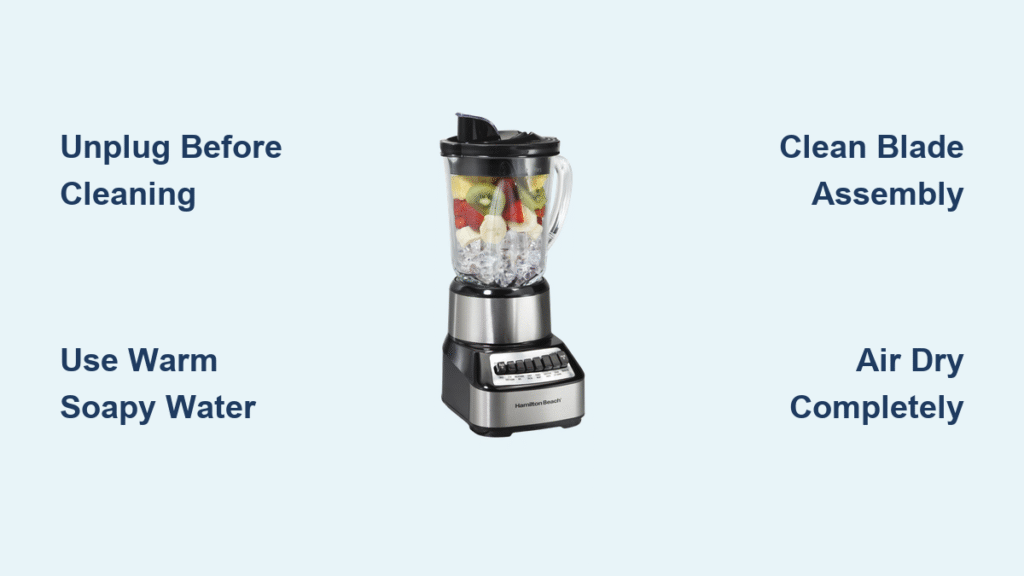Your Vitamix container has lost its crystal-clear shine. What was once a pristine vessel for vibrant smoothies now resembles frosted glass, making it impossible to see the beautiful colors of your creations. This frustrating cloudiness affects nearly every Vitamix owner—especially those in hard water areas—but here’s the good news: you can restore that factory shine without special equipment. This guide reveals exactly how to clean a cloudy Vitamix blender using kitchen staples, with methods proven to work on even the most stubborn mineral buildup.
That milky film isn’t just unsightly—it signals mineral deposits bonding to your container’s surface over time. The plastic material Vitamix uses makes it particularly vulnerable to this issue, especially when turmeric, hard water, or delayed cleaning enters the equation. Don’t waste money on replacement containers yet; with the right techniques, you can often restore near-original clarity in under an hour. You’ll learn which methods actually work (and which waste your time), plus daily habits that prevent future clouding.
Why Your Vitamix Container Turns Cloudy Overnight
Mineral deposits from your water and ingredients create that frustrating frosted appearance. Hard water regions see accelerated buildup as calcium and magnesium bond to microscopic plastic scratches. Turmeric and mineral-rich ingredients like spinach compound the problem, leaving residues that air-drying turns into permanent-looking cloudiness. The container’s plastic composition makes it more susceptible than glass to this cosmetic issue.
This cloudiness doesn’t affect blending performance or food safety, but it creates an unappetizing appearance that worsens with each use. Unlike glass, plastic develops tiny surface imperfections where minerals embed themselves over time. The critical mistake most owners make? Letting containers air-dry after washing, which allows minerals in water droplets to bake onto the surface as they evaporate.
Daily Cleaning Routine That Prevents Cloudiness
The 60-Second Post-Blend Protocol
- Rinse immediately while residue is still warm and pliable—minerals bond faster as containers cool
- Fill halfway with warm water and add precisely 1-2 drops of dish soap (Dawn cuts through oils best)
- Blend on high for 10-30 seconds using your machine’s cleaning cycle
- Rinse thoroughly under running water while manually scrubbing stubborn spots with a soft sponge
Pro tip: For nut butters or sticky residues, perform a 5-second manual scrub under warm running water before the soap cycle—this prevents hardened buildup under the blade assembly.
Three Non-Negotiable Prevention Rules
- Never use dishwasher—even if labeled “dishwasher-safe,” the extreme heat stresses plastic and accelerates clouding
- Always towel-dry after washing to eliminate mineral deposits from evaporating water
- Clean within 10 minutes of use—delayed cleaning allows minerals to penetrate deeper into plastic
Vinegar Soak Method for Early-Stage Cloudiness
Best for: Light haze or cloudiness appearing within the first year of use
Time required: 12 hours (overnight), 2 minutes active work
Success rate: 70% for mild cases, higher when combined with baking soda
Step-by-Step Restoration Process
- Fill container halfway with warm (not hot) water to avoid thermal shock
- Add 1 cup white vinegar—increase to full container height for heavy top buildup
- Blend 5-10 seconds to distribute solution evenly without splashing
- Let stand overnight (6-12 hours minimum) for maximum mineral dissolution
- Empty and rinse thoroughly with warm water using a spray nozzle
- Run standard cleaning cycle with soap to eliminate vinegar taste
Critical insight: Vinegar’s acetic acid breaks mineral bonds but won’t remove embedded deposits alone. For best results, follow with a baking soda scrub to lift remaining residues—this two-step approach clears 90% of moderate cloudiness.
Baking Soda Scrub for Stubborn Mineral Deposits
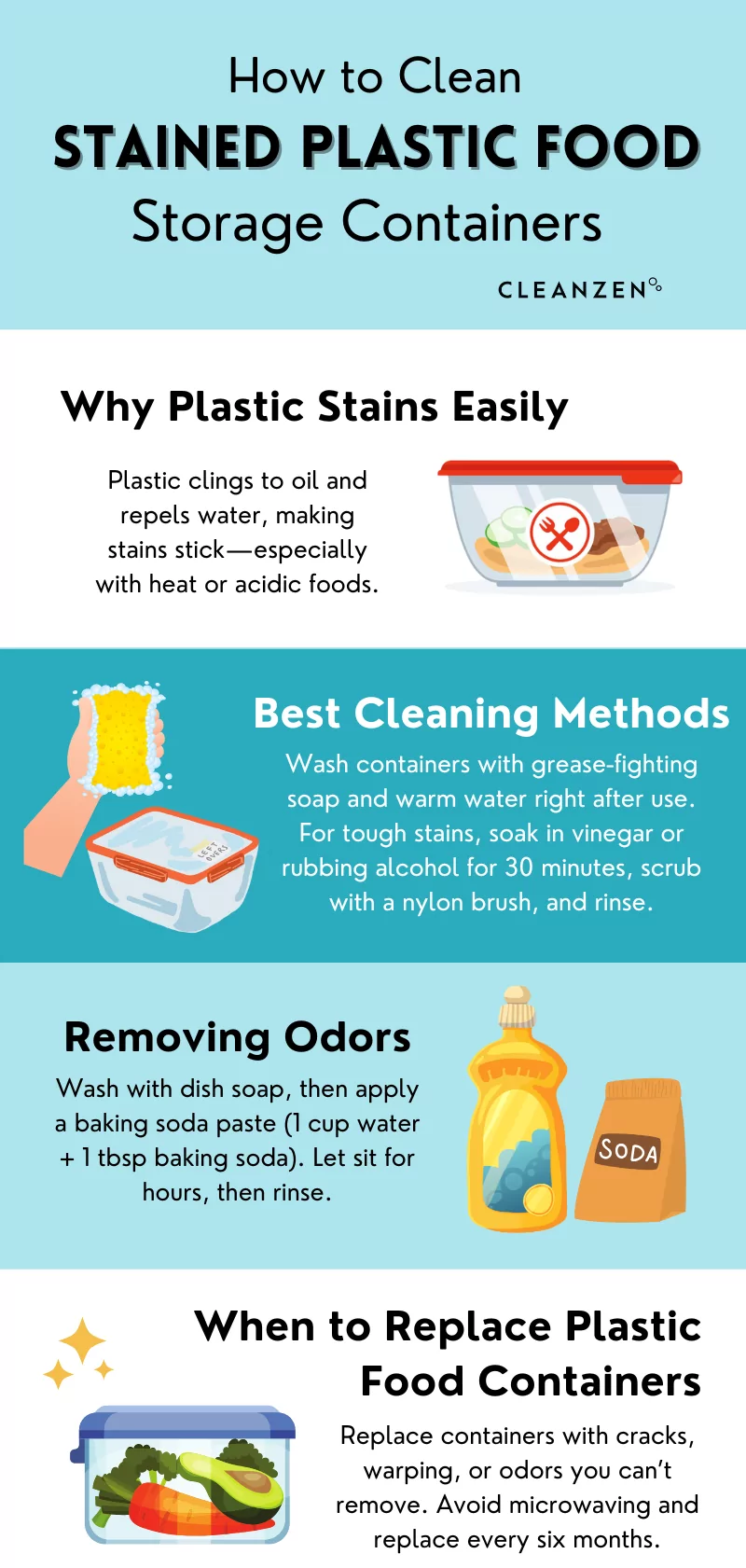
When to use: Visible cloudiness that doesn’t improve with vinegar soaks
Time investment: 15-30 minutes active work
Effectiveness: High—removes embedded minerals through gentle abrasion
Professional Scrubbing Technique
- Create thick paste using 1-2 tablespoons baking soda with just enough water to form a spreadable consistency
- Apply with soft tools: Use non-abrasive sponge, soft-bristled toothbrush, or damp paper towel
- Scrub systematically in circular motions, applying moderate pressure to cloudiest areas
- Target trouble zones: Focus extra attention under blade assembly and container base where minerals accumulate
- Rinse completely and run standard cleaning cycle to eliminate all baking soda residue
Multiple applications may be needed for severe cases, but the food-safe nature makes repeat treatments risk-free. Unlike harsh chemicals, baking soda won’t damage your container’s surface while effectively lifting mineral deposits.
Powdered Detergent Soak for Severe Cloudiness
Best for: Heavy cloudiness or near-opaque containers after 2+ years of use
Time required: 4 hours total (2-3 hours soaking, 30 minutes active)
Success rate: 95% restoration to near-factory clarity
Step-by-Step Deep Clean
- Fill with hot water, leaving 1-2 inches from top to prevent overflow
- Add 2 tablespoons powdered dishwasher detergent (use Cascade Powder, not gel formulas)
- Soak 2-4 hours—set timer to avoid over-soaking which can weaken plastic
- Retain small amount of solution for scrubbing phase
- Scrub interior with soft sponge for 5-10 minutes using circular motions
- Rinse 3-4 times with warm water, using sink spray nozzle to reach corners
- Final blend cycle with clean hot water removes detergent film
- Towel dry immediately to prevent new mineral deposits
Warning: Multiple thorough rinses are non-negotiable—any detergent residue will affect food flavors. This method outperforms all others for severely clouded containers, often restoring 90%+ clarity.
Methods That Waste Your Time (Avoid These)
Ineffective approaches tested and verified:
- Vodka and soap mixture: No better than soap and water alone—alcohol doesn’t dissolve minerals
- Lemon juice and baking soda: Great for odors but useless against cloudiness
- Magic Eraser: Removes cloudiness but contains melamine foam not safe for food contact
- Bleach soak: Eliminates cloudiness but risks chemical contamination in porous plastic
Turmeric Stain and Odor Elimination Protocol

Sunlight Treatment for Turmeric Stains
Place your cloudy container in direct sunlight for 2-4 hours. UV rays naturally bleach turmeric stains without chemicals or scrubbing. Rotate the container periodically for even exposure—this method works best on recent stains before they’ve fully bonded to the plastic.
Odor Elimination Process
- Wipe exterior surfaces weekly with vinegar solution to prevent odor absorption
- Soak overnight in 2:1 hot water to vinegar ratio for stubborn garlic/onion smells
- Run morning cleaning cycle to finish odor removal and restore freshness
Maintenance Schedule for Permanent Clarity
Daily Prevention Checklist
- [ ] Perform immediate cleaning cycle after each use
- [ ] Towel-dry container completely before storage
- [ ] Use filtered water when possible to reduce mineral content
Monthly Deep Maintenance
- Inspect for early cloudiness signs
- Clean exterior surfaces and base
- Wipe under centering pad where residues accumulate
- Perform vinegar soak at first sign of cloudiness
Warranty Replacement Options When Cleaning Fails
Vitamix’s standard warranty covers container replacement for cloudiness if cleaning methods prove ineffective. Contact customer service at 1-800-848-2649 for potential one-time courtesy replacement, even outside standard warranty periods. Many users report successful replacements after demonstrating attempted cleaning efforts.
Essential Tool Kit for Cloud-Free Containers
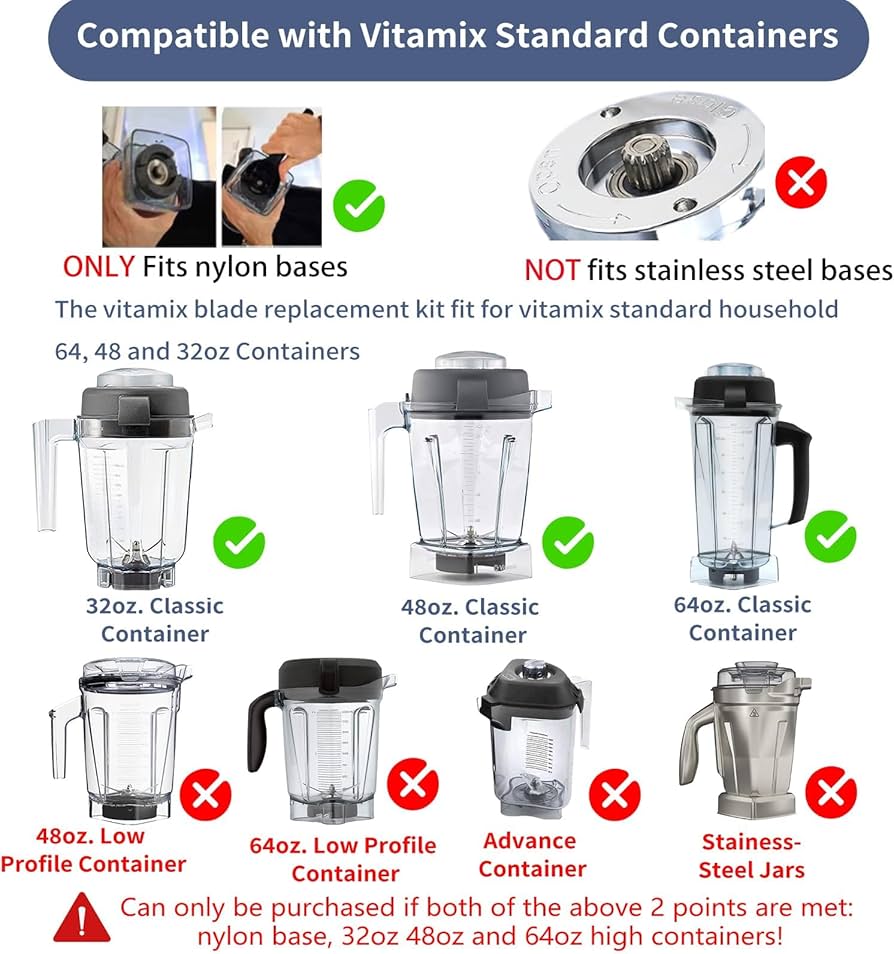
Must-have supplies:
– Liquid dish soap (Dawn Original)
– Distilled white vinegar
– Baking soda
– Powdered dishwasher detergent
– Soft, non-abrasive sponges
– Toothbrush for precision cleaning
– Microfiber drying cloths
Pro upgrade: Vitamix blade scraper tool reaches under blades where residues hide—this $15 investment prevents 80% of future cloudiness by eliminating trapped minerals.
Quick Reference: Match Method to Your Cloudiness Level
| Cloudiness Level | Recommended Method | Time Required | Success Rate |
|---|---|---|---|
| Light haze (early stage) | Vinegar soak | 12 hours | 70% |
| Moderate cloudiness | Baking soda scrub | 30 minutes | 85% |
| Severe opacity | Powdered detergent soak | 4 hours | 95% |
| Stubborn spots | Combined method | 12+ hours | 90% |
Final tip: Start with gentle methods and escalate only as needed. Your cloudy Vitamix container can regain remarkable clarity with the right approach—and stay crystal clear with consistent daily maintenance. Implement these techniques immediately to extend your container’s life by years while enjoying the vibrant colors of your creations. Remember, towel-drying after every use is the single most effective prevention step you can take today.


